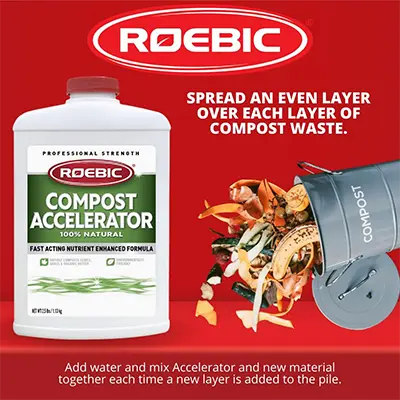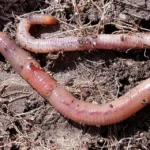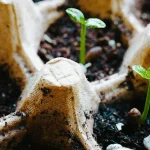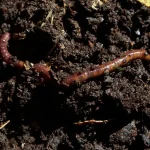Composting is essential for sustainable gardening and waste management, transforming organic scraps into nutrient-rich soil. This article delves into the various stages of composting, from the initial breakdown of food scraps to the final transformation into fertile soil. By understanding each phase and optimizing your compost heap, you can efficiently turn kitchen and yard waste into valuable resources for your garden.
Understanding the Composting Process
Composting is a natural process that transforms organic waste into nutrient-rich soil called humus. This biological decomposition involves microorganisms such as bacteria, fungi, and actinomycetes breaking down organic materials like food scraps, yard waste, and paper products. The composting process can be divided into three main stages: the mesophilic phase, the thermophilic phase, and the maturation phase.
During the mesophilic phase, which lasts a few days to weeks, moderate-temperature microbes break down easily degradable compounds at temperatures between 68-113°F (20-45°C). This initial stage generates heat due to microbial activity.
The thermophilic phase follows and can last several weeks to months. As temperatures rise above 113°F (45°C), high-temperature microbes take over, accelerating the breakdown of more complex organic materials such as cellulose and lignin. This stage is crucial for pathogen destruction and weed seed inactivation.
During the maturation or curing stage, temperatures gradually decrease to ambient levels. Mesophilic organisms return to decompose any remaining resistant materials further. This final stage ensures that the compost stabilizes and matures into a dark brown or black crumbly substance with an earthy smell, ready for enriching garden soil.
Understanding these phases helps manage your compost pile effectively for optimal results.
Initial Stages: When Does a Material Begin to Compost?
The initial stages of composting begin almost immediately after organic material is added to the compost pile. Within hours, microorganisms such as bacteria and fungi start breaking down the simplest compounds in the organic matter. This phase is known as the mesophilic stage, where temperatures range between 68°F and 113°F (20°C to 45°C). During this period, these microorganisms rapidly consume quickly degradable materials like sugars and proteins.
Within a few days, microbial activity generates heat, causing the temperature within the compost pile to rise significantly. This marks the transition into the thermophilic stage, where temperatures can soar up to 160°F (71°C). The high heat helps break down more complex organic materials such as cellulose and lignin found in plant cell walls. It also serves a vital role in killing off pathogens and weed seeds that may be present.
Throughout these initial stages, it’s crucial to maintain proper aeration and moisture levels in your compost heap. Turning or mixing the pile ensures oxygen reaches all parts of it, promoting aerobic decomposition while preventing foul odors associated with anaerobic conditions. Adequate moisture keeps microbial activity at its peak but should be balanced to avoid waterlogging or drying out.
Food Scraps Breakdown: How Long Until They Turn into Compost?
The decomposition of food scraps is a critical phase in the composting process, transforming organic waste into nutrient-rich compost. The time it takes for food scraps to break down can vary significantly based on several factors, including the type of food waste, environmental conditions, and how well the compost pile is managed.
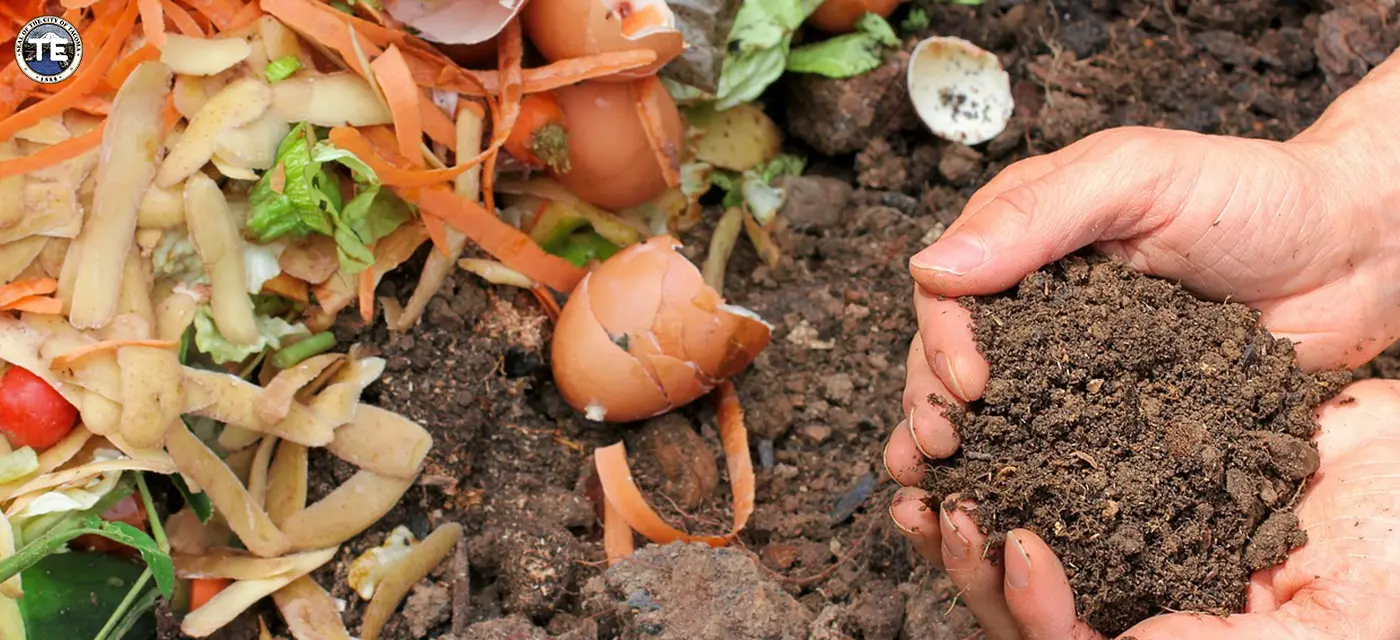
Typically, fruit and vegetable scraps are among the fastest to decompose, often breaking down within a few weeks to a couple of months under optimal conditions. These conditions include maintaining a balanced carbon-to-nitrogen ratio (ideally around 30:1), ensuring adequate moisture levels (about as damp as a wrung-out sponge), and providing sufficient aeration by regularly turning the pile.
On the other hand, more fibrous materials like corn cobs or avocado pits may take several months to fully break down due to their tougher structures. Adding smaller pieces of these items can help speed up their decomposition.
Temperature also plays a crucial role; higher temperatures within an active compost heap accelerate microbial activity, thus hastening breakdown. In contrast, colder climates or poorly managed piles will slow this process considerably.
Under ideal circumstances, soft food scraps might decompose in weeks, while harder materials could take several months. Regular monitoring and maintenance are key to achieving efficient breakdown rates in composting efforts.
Forming Usable Compost: What is the Typical Timeframe?
The time frame for forming usable compost can vary significantly based on several factors, including the materials used, environmental conditions, and how well the compost pile is managed. Generally, organic matter takes anywhere from two months to two years to decompose into usable compost.
For a faster turnaround of about 2–6 months, maintaining an optimal balance of green (nitrogen-rich) and brown (carbon-rich) materials is crucial. Regularly turning the pile to aerate it and keeping it moist but not waterlogged also accelerates decomposition. A hot composting method, where temperatures within the pile reach between 130°F and 160°F (54°C to 71°C), can further speed up this process by creating ideal conditions for microbial activity.
On the other hand, a more passive approach is adding organic waste without much maintenance, which can extend the timeline to one or even two years before achieving mature compost. Cold composting piles break down slower due to lower internal temperatures and less frequent aeration.
The time it takes to form usable compost typically ranges from a few months to a couple of years; active management practices can significantly reduce this time-frame depending on various factors.
Transforming into Soil: How Long Does It Take for Compost to Become Soil?
The transformation of compost into soil is a gradual process that depends on various factors, including compost composition, environmental conditions, and microbial activity. Typically, well-maintained compost can take six months to two years to fully integrate into the soil.
Initially, organic matter in the compost undergoes decomposition through microbial action. This phase can last several weeks to a few months. As microorganisms break down complex organic materials like cellulose and lignin, they produce humus, a stable form of organic matter rich in nutrients.
Once humus forms, it begins mixing with existing soil particles through natural processes such as rainwater infiltration and earthworm activity. Over time, this integration enhances soil structure by improving aeration and water retention capabilities.
Environmental conditions play a crucial role in this timeline. Warmer climates with adequate moisture levels accelerate microbial activity and decomposition rates. Conversely, colder or overly dry environments slow down these processes significantly.
Regular turning and proper aeration of your compost heap can also expedite its conversion into usable soil by ensuring a consistent oxygen supply for aerobic microbes that break down organic material.
Absorption Rates: How Quickly Can Plants Benefit from Added Compost?
The absorption rates of compost into the soil and its subsequent benefits to plants can vary based on several factors, including the type of compost used, soil conditions, and plant species. Generally, once compost is added to the soil, it improves soil structure almost immediately by enhancing aeration and water retention capabilities. Microbial activity in the compost also starts working immediately to further break down organic matter.
Due to increased nutrient availability, plants may show improved health within a few weeks. Nutrients such as nitrogen, phosphorus, and potassium become more accessible as they are released from decomposing organic material in the compost. This results in enhanced root development and overall plant vigor.
However, for maximum benefits like significant growth spurts or higher crop yields, plants might take a full growing season (about 3–6 months) to fully capitalize on all the nutrients provided by well-decomposed compost. During this period, continuous microbial activity ensures that nutrients are steadily supplied.
Immediate improvements can be observed within weeks after adding compost to your garden or farm soil. Optimal plant benefits typically manifest over several months as nutrient release continues progressively.
Optimizing Your Heap: Tips for Speeding Up the Process
Several strategies can be employed to optimize your heap to accelerate the composting process. Firstly, ensure a balanced mix of green (nitrogen-rich) and brown (carbon-rich) materials. Greens include kitchen scraps and grass clippings, while browns encompass leaves and cardboard. A ratio of roughly 3 parts brown to 1 part green is ideal.
Secondly, maintain adequate moisture levels; your compost should be as damp as a wrung-out sponge. Too much water can lead to anaerobic conditions, slowing decomposition and causing unpleasant odors.
Thirdly, aeration is crucial. Regularly turning your pile introduces oxygen that aerobic microbes need to thrive and break down organic matter efficiently. Aim to turn the heap every one to two weeks.
Additionally, chopping or shredding larger items before adding them will increase their surface area, making it easier for microorganisms to decompose them quickly.
Temperature also plays a significant role in speeding up composting. A hot compost pile (between 135-160°F) decomposes faster than a cooler one. To achieve this heat level, consider using an insulated bin or covering your heap with a tarp during colder months.
Lastly, avoid adding meat products or dairy, which can attract pests and slow down the process due to their complex composition.
By following these tips, balancing materials, maintaining moisture and aeration levels, and effectively managing temperature, you'll create optimal conditions for rapid decomposition in your compost heap.
Signs That Your Compost is Ready for Use
Determining when your compost is ready to use can be crucial for maximizing its benefits in gardening and agriculture. One of the primary indicators that compost has matured is its appearance. The final compost should look dark brown or black, resembling rich soil, rather than a collection of decomposed materials. It will also have a crumbly texture, breaking apart easily in your hands.
Another key sign is the smell. Mature compost should emit an earthy aroma, similar to the scent of forest soil after rain. It likely needs more time to decompose fully if it still smells like rotting food or ammonia.
Temperature also plays a significant role; active compost heaps generate heat due to microbial activity. When the internal temperature stabilizes and cools down to match ambient conditions, it's often an indication that decomposition has slowed and the composting process is nearing completion.
Lastly, inspect for any remaining recognizable scraps or large chunks of organic material. Fully processed compost will not contain visible remnants of its original components, such as vegetable peels or leaves.
By paying attention to these signs, such as appearance, smell, temperature stability, and the absence of identifiable materials, you can confidently determine when your compost is ready to enrich your garden soil.
Mastering the timeline of composting involves recognizing the different stages and factors that influence decomposition rates. From managing moisture levels to ensuring proper aeration, these insights help accelerate the process, ultimately producing high-quality compost ready to enrich your soil. By following these guidelines and monitoring key indicators, you can effectively convert organic waste into a beneficial resource for plant growth and soil health.

Lifelong bacon junkie. Lifelong internet fanatic. Hipster-friendly travel aficionado. Twitter lover. Avid food buff. Incurable travel trailblazer.




